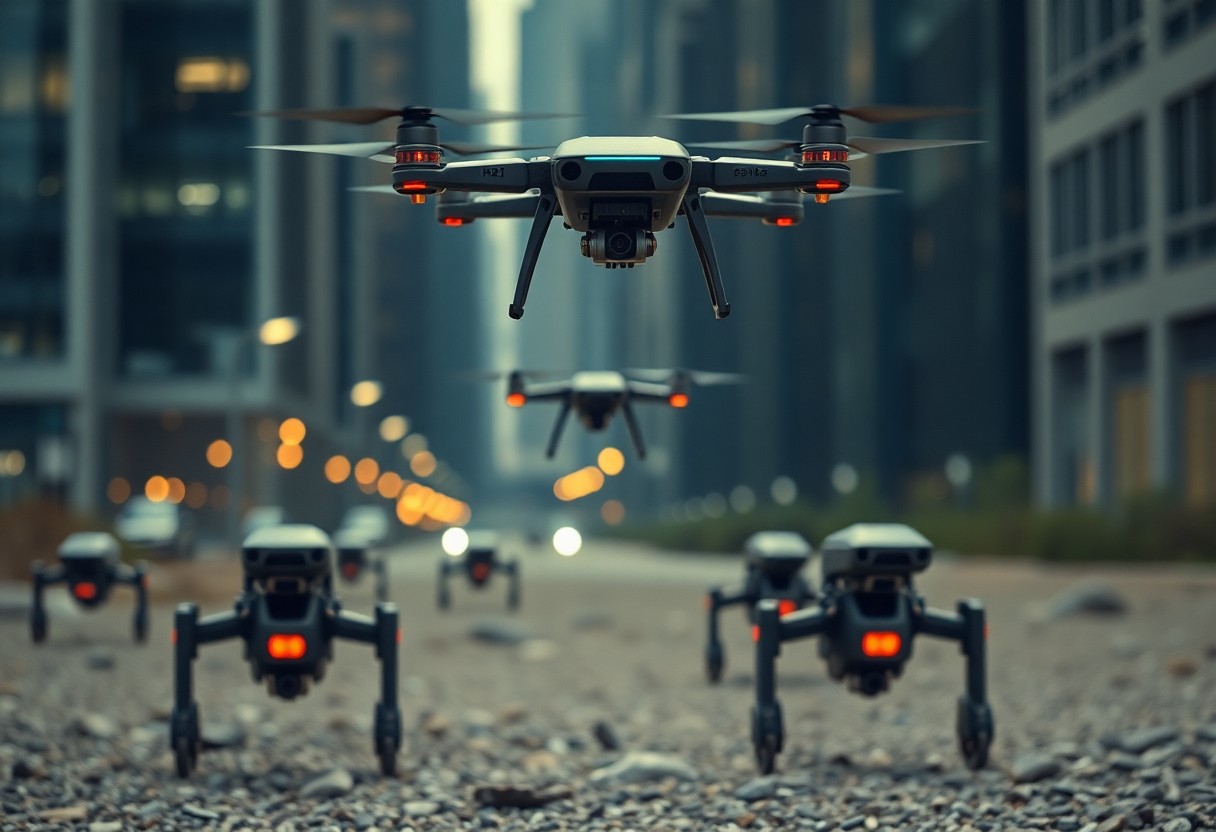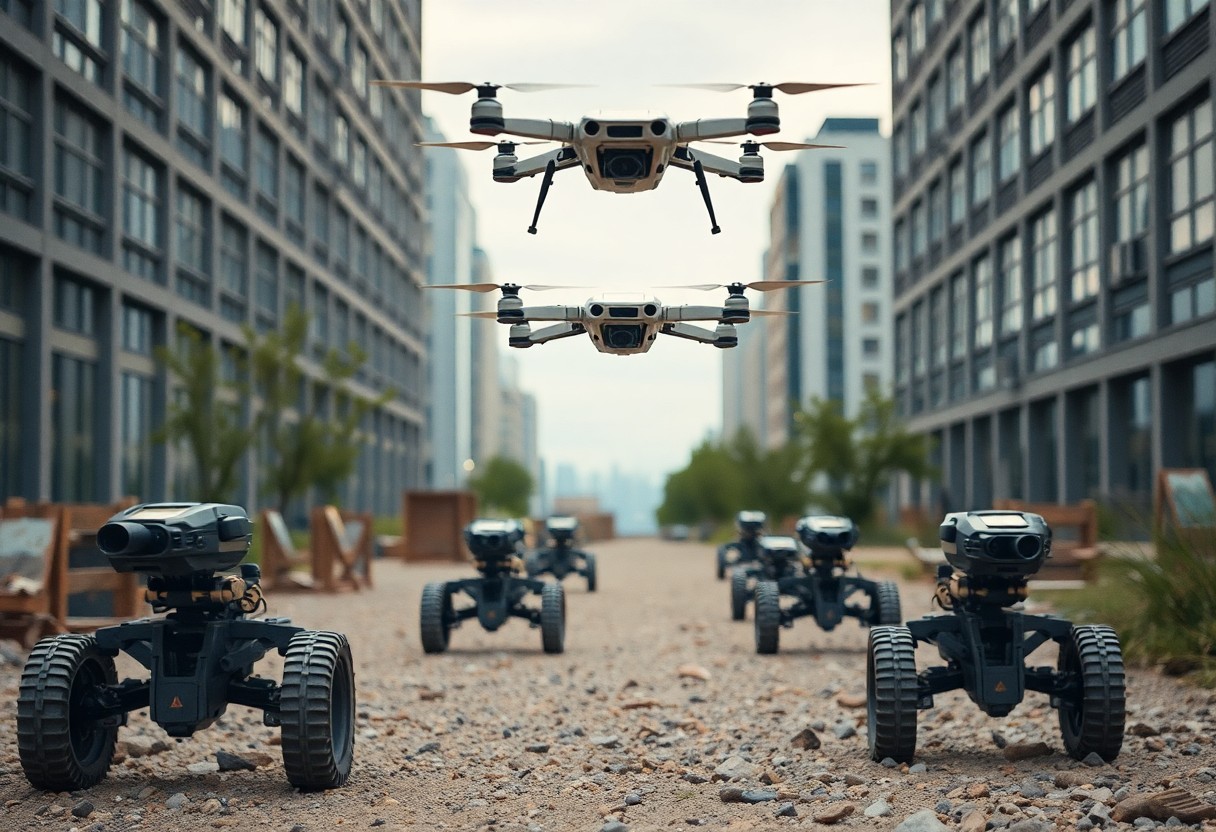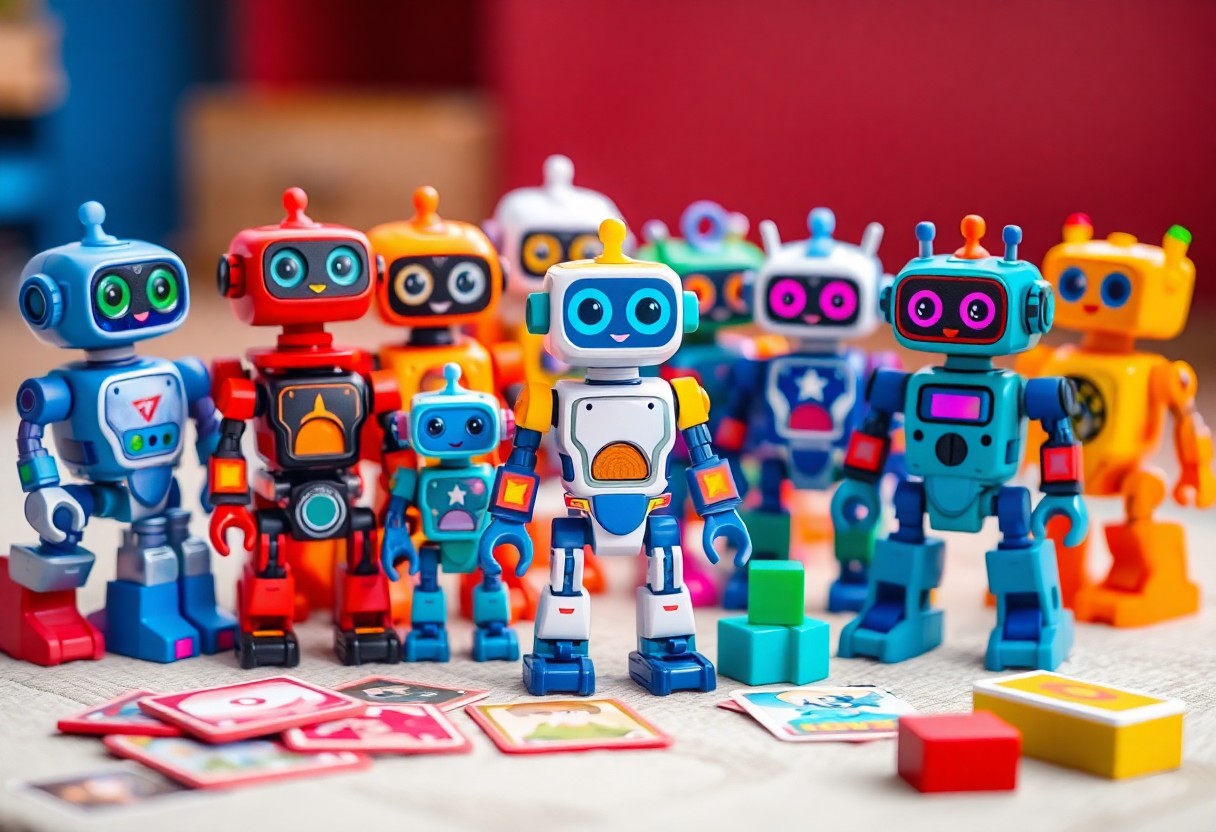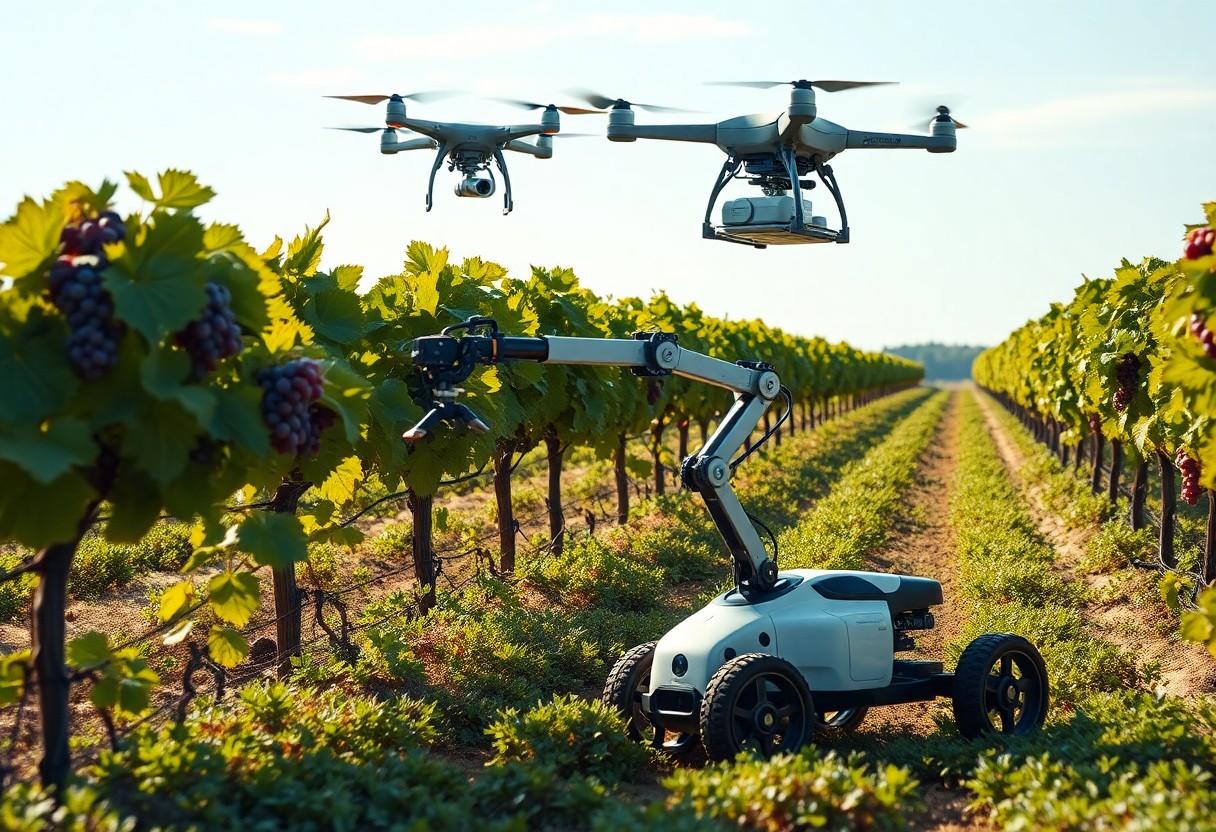Robotics technology is evolving rapidly, and integrating AI-enhanced drones with ground robots is transforming operational capabilities across various sectors. You may find that this synergy allows for more efficient data collection, improved reconnaissance, and better resource management. By leveraging the strengths of both aerial and terrestrial units, you can enhance situational awareness and streamline processes in fields such as agriculture, military, and logistics. This blog post explores how these dynamic collaborations are reshaping the landscape of robotics and offering new solutions for complex challenges.

Overview of AI-Enhanced Drones
Definition and Functionality
AI-enhanced drones are unmanned aerial vehicles (UAVs) equipped with artificial intelligence systems that enable autonomous navigation, advanced data processing, and real-time decision-making. These drones serve various purposes, from surveillance and delivery to agricultural monitoring and disaster response, significantly improving efficiency and precision in these tasks.
Key Technologies Involved
Several technologies drive AI-enhanced drones, including computer vision, machine learning algorithms, and advanced sensor integration. These components enable drones to analyze environments intelligently, recognize patterns, and make informed operational choices without human intervention.
For instance, computer vision systems allow drones to identify objects and navigate complex terrains seamlessly, while machine learning algorithms enhance their ability to adapt to changing conditions by learning from previous flights. Integration of advanced sensors, such as LiDAR and thermal cameras, amplifies these capabilities, facilitating detailed data collection and analysis. Many manufacturers are also including GPS-denied navigation techniques to ensure reliability in challenging environments, making AI-enhanced drones a vital asset in various industries.
Ground Robots in Unified Operations
Ground robots serve as a vital extension of aerial capabilities, creating a cohesive operational framework. When paired with drones, they can enhance mission efficiency by executing tasks that complement aerial reconnaissance and logistics. This combination not only boosts productivity but also provides real-time data exchange, improving situational awareness and decision-making in complex environments.
Types of Ground Robots
Ground robots come in various forms, each designed for specific tasks in unified operations. Standard types include:
- Autonomous Mobile Robots (AMRs)
- Automated Guided Vehicles (AGVs)
- Humanoid Robots
- Robotic Arm Systems
- Exploration Rover Units
After understanding these types, you can appreciate their unique contributions to integrated systems.
| Type of Ground Robot | Purpose |
| Autonomous Mobile Robots | Navigation and delivery tasks |
| Automated Guided Vehicles | Warehouse automation |
| Humanoid Robots | Human interaction |
| Robotic Arm Systems | Assembly line production |
| Exploration Rover Units | Terrain mapping and data collection |
Role of Ground Robots in Integrated Systems
In integrated systems, ground robots support drones by executing ground-level tasks and collecting data that ground-based sensors might miss. Their mobility allows them to navigate various terrains, enabling them to undertake deliveries or perform inspections that drones cannot complete autonomously. This synergy reduces operational downtime and enhances data collection capabilities.
For example, in agricultural monitoring, drones can survey a field for health metrics, while ground robots can transport samples back to labs for analysis. Similarly, in disaster response scenarios, drones might identify locations needing assistance, with ground robots delivering vital supplies. These systems function effectively together as they share information seamlessly, allowing for improved planning and optimized resource allocation, which ultimately leads to more effective mission outcomes.
Benefits of Integration
The integration of AI-enhanced drones with ground robots presents numerous advantages, including streamlined workflows, enhanced operational safety, and improved data accuracy. By combining aerial and ground capabilities, organizations can tackle complex tasks more effectively, reducing manual effort and increasing productivity. This synergy not only optimizes resource allocation but also leads to faster decision-making, allowing you to accomplish objectives that would be challenging for either technology alone.
Improved Efficiency and Coordination
When drones and ground robots operate in concert, you experience a significant boost in efficiency and coordination. Tasks such as search and rescue missions or agricultural monitoring become seamless as aerial views provide situational awareness while ground robots handle detailed tasks. This dynamic duo minimizes downtime, ensuring that operations run smoothly, thus saving you valuable time and resources.
Enhanced Data Collection and Analysis
Data accuracy and revelatory insights increase dramatically when drones and ground robots collaborate. By utilizing drones to capture high-resolution aerial imagery complemented by ground robots gathering detailed sensor data, you can achieve a comprehensive understanding of your environment. This synergy results in in-depth analysis, leading to informed decision-making and actionable strategies tailored to your specific conditions.
For instance, in precision agriculture, drones equipped with multispectral sensors can identify crop health from above, while ground robots can perform soil analysis and pest detection. When combined, these datasets allow you to make precise interventions, maximizing crop yields and minimizing resource waste. The integration facilitates real-time data sharing, ensuring that both aerial and ground assets work with the most current information, leading to smarter operations overall.
Challenges and Limitations
As AI-enhanced drones and ground robots integrate, a variety of challenges arise that can hinder their performance. Issues like communication breakdowns, differing operational protocols, and safety concerns contribute to a complex environment where seamless collaboration is imperative. For deeper insights, refer to Integrated Drones, Robots and Vessels: The Next Leap in ….
Technical Barriers
Technical barriers include the need for robust communication systems that ensure real-time data exchange between drones and ground robots. Limitations in sensor technologies can also restrict the precision and reliability of navigation and coordination among these autonomous systems.
Operational Challenges
Operational challenges often stem from environmental factors like terrain unpredictability, which can alter the effectiveness of both drones and robots. Additionally, variations in power sources and battery life can affect mission duration and reliability, complicating logistics in time-sensitive scenarios.
You may find that operational challenges extend to coordination during complex missions. For instance, in a search-and-rescue operation, the unpredictable nature of real-world environments might lead to miscommunication between units. Drones may face obstacles like trees or buildings that ground robots cannot navigate as easily, necessitating advanced programming to ensure both entities work seamlessly under pressure. Ensuring that both aerial and ground assets can synchronize their actions in diverse scenarios is imperative for mission success.
Case Studies of Successful Integration
Numerous case studies highlight the successful integration of AI-enhanced drones and ground robots across various sectors, demonstrating considerable operational improvements and efficiencies.
- Military: The U.S. military reported a 30% increase in reconnaissance efficiency using integrated drone and ground robot deployments during Operation Enduring Freedom.
- Agriculture: An agro-tech company utilized drones and ground robots together, achieving a 50% reduction in pesticide usage while increasing crop yield by 20%.
- Disaster Response: During a natural disaster simulation, integrated systems reduced search times by 40%, enabling quicker delivery of aid.
- Logistics: A major logistics firm improved warehouse efficiency by 25% through coordinated drone and robot inventory checks.
Military Applications
Your understanding of military applications is underscored by successful operations such as the U.S. Army’s use of drone-ground robot integration, leading to a significant 40% reduction in manpower needed for reconnaissance missions. This not only enhances operational safety but also increases mission success rates.
Commercial Uses
In the commercial sector, companies are leveraging AI-enhanced drone and ground robot integration to optimize logistics and supply chains. For instance, a notable partnership between a delivery service and drone manufacturers resulted in a tenfold increase in package delivery speeds, significantly reshaping customer experiences.
The commercial realm showcases diverse applications where AI-enhanced drones and ground robots work symbiotically to streamline operations. In sectors like logistics, retail, and agriculture, businesses report remarkable gains in efficiency and productivity. For example, a leading retail company integrated drones for inventory and ground robots for in-store stock management, yielding a 35% increase in inventory accuracy and a decrease in labor costs by 20%. This synergy not only enhances operational workflows but also fosters better service delivery to customers, setting a benchmark for future applications.
Future Trends in AI and Robotics Integration
The future of AI and robotics integration is poised for significant advancements as technology evolves. Innovations like AI-Driven “Wolf Robots” enhance frontline operational efficiency, showcasing the potential of combining ground and aerial capabilities. As AI-Driven “Wolf Robots” Enhance Frontline Operational … suggests, these developments will redefine tactical approaches in military and industrial applications, driving an increase in adoption rates across various sectors.
Emerging Technologies
Emerging technologies are reshaping the landscape of robotics and AI integration. Technologies such as 5G connectivity, edge computing, and advanced machine learning algorithms enable more responsive, real-time interactions between drones and ground robots. These innovations allow for improved data sharing and analysis, enhancing situational awareness and operational effectiveness on the ground and in the air.
Predictions for the Next Decade
In the next decade, you can expect exponential growth in AI and robotics integration, with both industries converging to create more adaptive and intelligent systems. By 2030, a projected 60% of military and commercial operations will leverage advanced AI and robotics, significantly enhancing operational capabilities and decision-making processes.
This predicted shift is supported by the increasing investment in AI research and development, which is projected to exceed $100 billion annually. The integration of advanced AI algorithms will allow drones and robots to operate autonomously in complex environments, working collaboratively without human intervention. By harnessing breakthroughs in machine learning and neuroscience-inspired designs, these systems will become more intuitive, reducing response times and improving mission success rates across various applications such as disaster relief, agriculture, and surveillance.
Conclusion
So, as you embrace the integration of AI-enhanced drones with ground robots, you position yourself at the forefront of technological innovation. This powerful collaboration enhances operational efficiency, streamlines data collection, and optimizes resource management. By leveraging these unified systems, you can achieve superior results across diverse applications, from logistics to security. Your adaptability in this evolving landscape will not only elevate your organizational capabilities but also reshape the future of automated operations.







